APM Insight Node.js agent performance report
The performance report assists you in optimizing the APM Insight Node.js agent and improving the overall performance of your application.
- Test environment
- Impact on application's response time
- Impact on CPU usage
- Impact on memory consumption
Test environment
OS: Ubuntu 20.04.1 LTS
CPU: 6-core
Memory: 15.3GB
Version: Node.js 16.6.0
Application framework: Express 4.18.2
Impact on application's response time
Four sample Node.js application instances were run with and without the APM Insight Node.js agent at 300 and 600 transactions per minute, respectively. The data was collected over a period of two hours, and the results are summarized below.
300 transactions per minute:
Response time summary |
Without agent |
With agent |
| Average response time (ms) | 2029 | 2054 |
| Peak response time (ms) | 2452 | 2485 |
The average time difference observed while running applications with and without the APM Insight Node.js agent is approximately 1.40%.
The timeline chart below explains the historical trend:
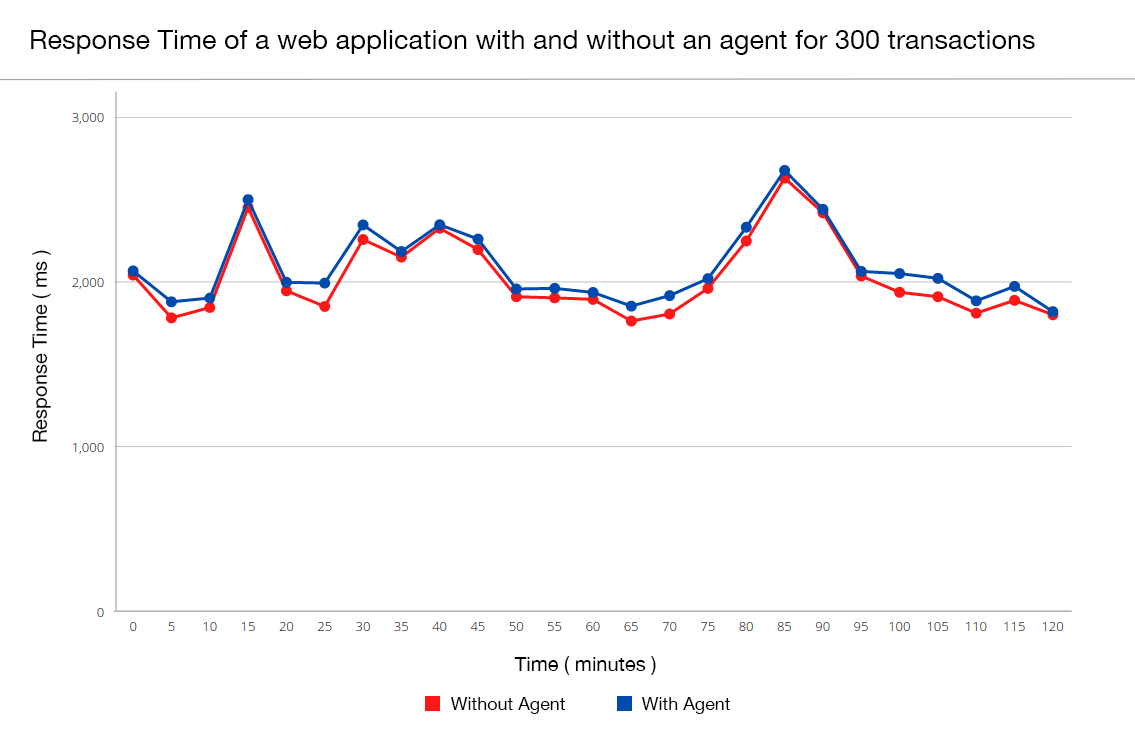
600 transactions per minute:
Response time summary |
Without agent |
With agent |
| Average response time (ms) | 2130 | 2194 |
| Peak response time (ms) | 2475 | 2498 |
The average time difference observed while running applications with and without the APM Insight Node.js agent is approximately 3%.
The timeline chart below explains the historical trend:
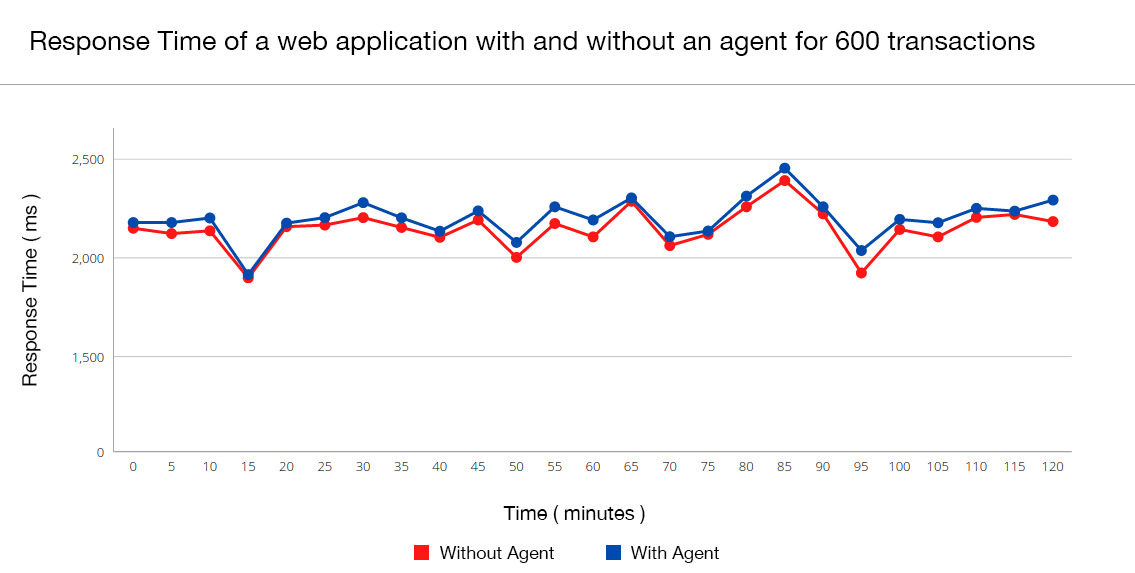
Impact on CPU usage
The CPU consumption by the APM Insight Node.js agent depends mainly on the number of methods instrumented.
The data shown below is a compilation of data from applications that ran parallel with and without the APM Insight Node.js agent.
300 transactions per minute:
CPU usage |
Without agent |
With agent |
| Average usage (%) | 0.53 | 2.3 |
When the application was running at 300 transactions per minute, the agent consumed an average of 1.8% of total CPU usage.
The timeline chart below explains the historical trend:
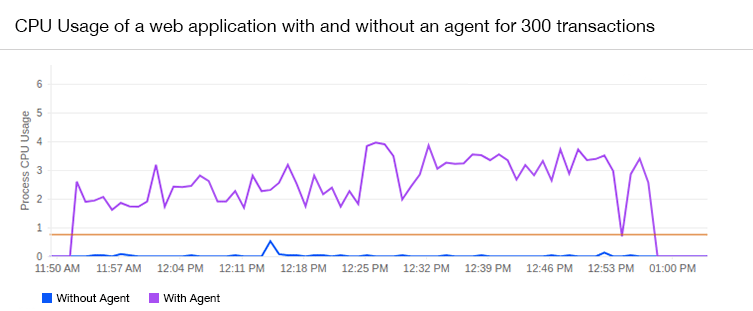
600 transactions per minute:
CPU usage |
Without agent |
With agent |
| Average usage (%) | 1.16 | 3.92 |
When the application was running at 600 transactions per minute, the agent consumed an average of 2.76% of total CPU usage.
The timeline chart below explains the historical trend:
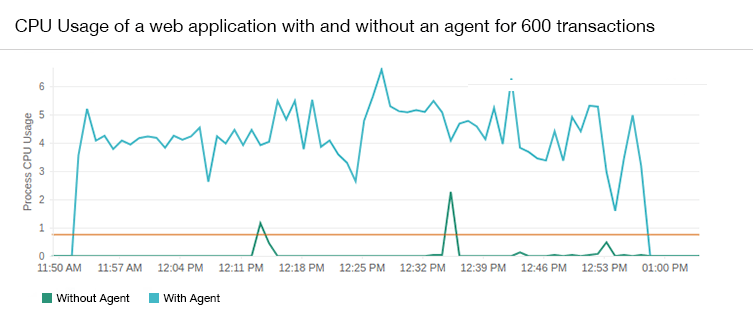
Impact on physical memory (RAM) usage
By default, the APM Insight Node.js agent collects performance data and pushes it to its own service every minute, so the footprint on user memory is minimal and only transient. It's important to note that memory consumption is directly proportional to the amount of data collected in a minute. Therefore, lowering the sampling factor or transaction trace threshold results in increased RAM usage.
The data shown below is a compilation of data from applications that ran parallel with and without the agent.
300 transactions per minute:
Memory usage |
Without agent |
With agent |
| Average usage (%) | 0.4 | 0.5 |
When the application was running at 300 transactions per minute, the agent consumed an average of 0.1% of total memory usage.
The timeline chart below explains the historical trend:
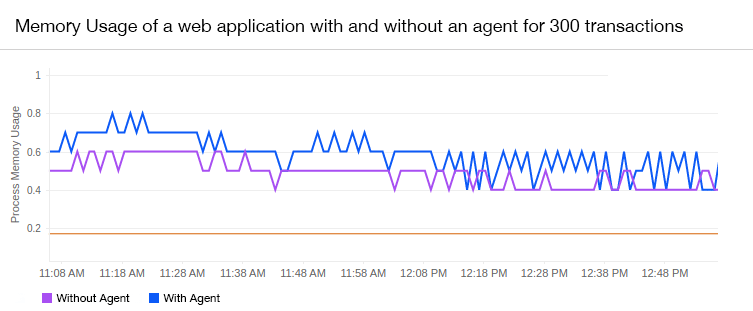
600 transactions per minute:
Memory usage |
Without agent |
With agent |
| Average usage (%) | 0.6 | 0.8 |
When the application was running at 600 transactions per minute, the agent consumed an average of 0.2% of total memory usage.
The timeline chart below explains the historical trend:
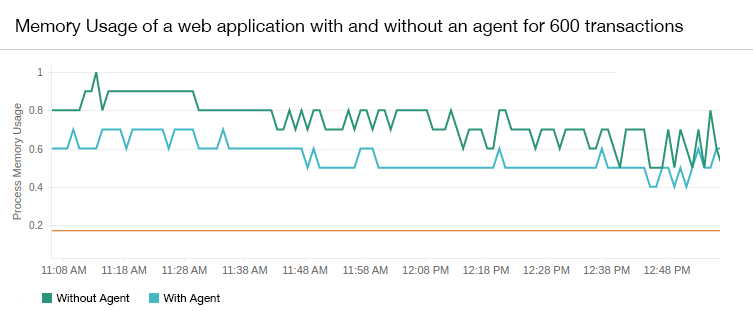
Network bandwidth usage
The communication between the APM Insight agent and Site24x7 servers is one-way HTTPS. The agent sends performance metrics to the Site24x7's server (plusinsight.site24x7.com) every minute.
The agent will send two requests per minute to Site24x7 servers.
- /arh/data — Carries metric data from all transactions performed on the server, with a maximum size of 100KB.
- /arh/trace — Carries traces of all transactions that consumed more response time than the configured threshold level. A complete snapshot of the transactions will be sent. This can help with debugging. The maximum data size sent is around 4MB.
